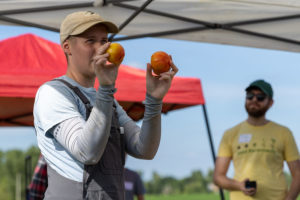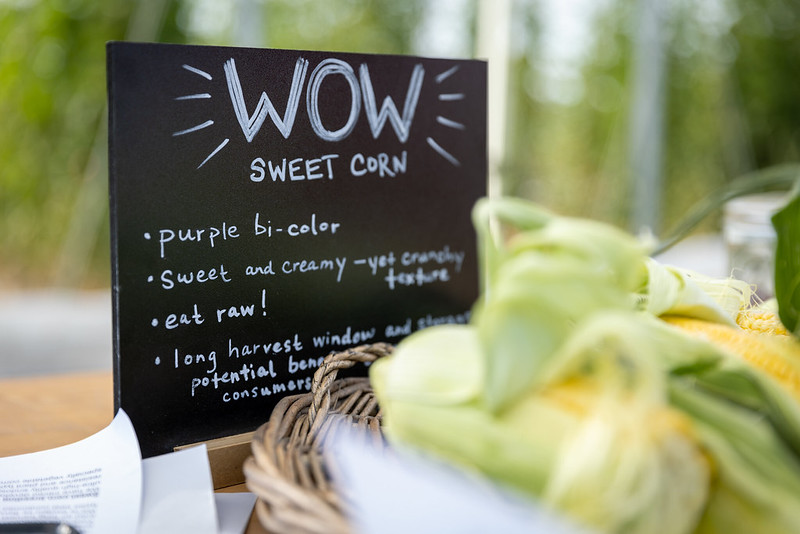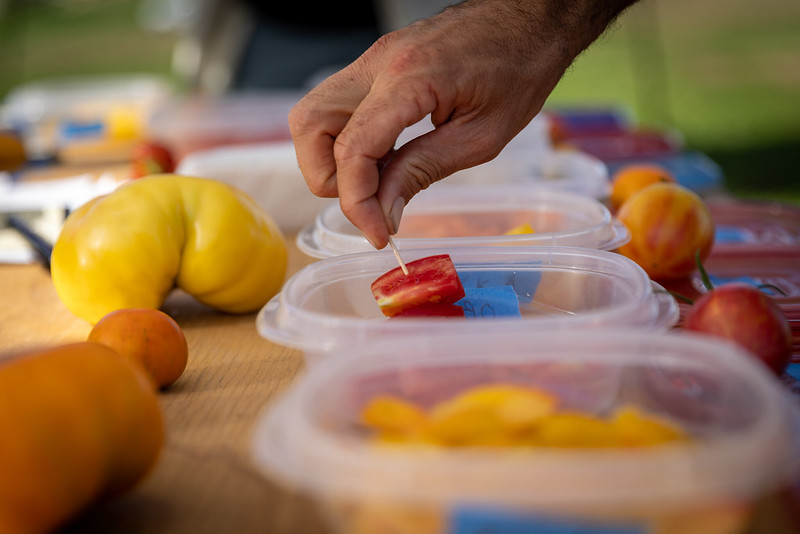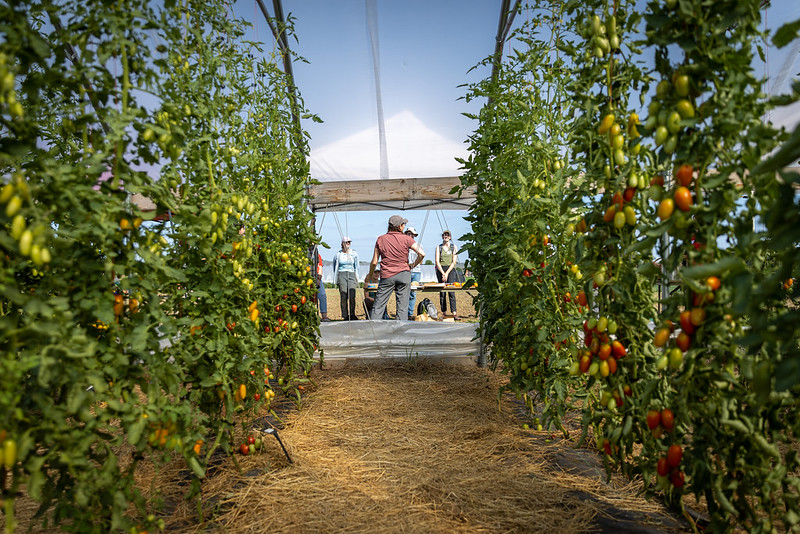
Collaboration is a key component of an equitable and adaptive agricultural system. Participatory plant breeding (PPB) is an approach for developing new cultivars where farmers, plant breeders and other stakeholders partner in the pursuit of shared goals. Farmers depend on seed that is adapted to their specific agroecological conditions, and many chefs seek new varieties with outstanding culinary traits. Publicly funded, professional plant breeders and researchers are dedicated to help meet these needs, though working together is essential to deliver a result that benefits everyone involved. Several PPB projects and collaborative opportunities were shared at the recent field day event held at the University of Wisconsin’s West Madison Agricultural Research Station.
The event featured presentations from research teams at the University of Wisconsin-Madison (UW) who are involving farmers and chefs in their efforts to develop new cultivars of crops such as tomatoes, peppers, carrots, and corn. Attendees were also invited to taste and provide feedback on some of the fruits and vegetables that had been harvested from these breeding projects.
The first presenters at the field day were involved with the Carrot Improvement for Organic Agriculture project (CIOA). We heard from Dr. Phil Simon, professor in UW’s horticulture department and leader of the USDA fresh market carrot breeding program; and Hannah Anderson, a master’s student in soil science studying with Dr. Zac Freedman, another partner in the project. The focus of CIOA is to develop new carrot cultivars, though there is a significant participatory component aimed at evaluating traits of these breeding lines across farm locations and farming methods. Working with carrot producers and researchers around the country, the team is interested in agronomic characteristics such as resistance to pests and diseases, as well as culinary traits such as color, flavor, shape, and texture. Several new cultivars are soon set to be released following years of on-farm variety trials which were fun for many participants because they included opportunities for selection based on novel colors and good flavor.
Next, a presentation highlighting the UW corn breeding program was given by Dr. Bill Tracy and PhD student Lexie Wilson. While hybrid sweet corns have dominated the landscape and marketplace for decades, some new and improved open-pollinated (OP) cultivars are being released that give farmers more choices and control over their seed supply. These OP lines give organic farmers an option to save their own seed and adapt the population to better grow in their region, which is taking place across the country. For farmers that chose to purchase seeds each year, the UW corn breeders are continuously improving their cultivars and experimenting with new hybrid populations to strengthen the organic grain supply chain in the Upper Midwest. Hearing the need of chefs seeking corn with flavors and textures not found in super-sweet sweet-corn, new types of “vegetable maize” are being developed and studied for their potential use in organic or low-input farming systems.
Finally, we heard from the Seed to Kitchen Collaborative research team (SKC) led by Dr. Julie Dawson. Research specialist Jenn Cava shared about the ongoing tomato and sweet pepper breeding projects being done in collaboration with Organic Seed Alliance, SeedLinked, eOrganic, and two independent plant breeders in the Midwest. Both independent breeders, Erica Kempter of Nature & Nurture Seeds and Keith Mueller of KC Tomato, are working with SKC alongside a network of dozens of farmers around the region to evaluate and improve their tomato breeding projects. PhD student Ámbar Carvallo Lopez shared about her work evaluating and breeding tomatoes in the Upper Midwest. The goal is to release new, regionally adapted tomato cultivars with excellent eating quality, disease resistance, and visual appeal (coloration and shape). An evaluation and breeding project with sweet peppers is also underway, looking to develop a cultivar that matures quickly with delicious flavor and crunchy texture.
Organically managed hoophouses filled with diverse tomato populations were open for touring, and we marveled at the multi-colored ripe fruits glowing in the afternoon sun. The evaluation of these breeding lines is not only taking place at the university research station, but also in gardens and farms across the Midwest. These multi-locational trials are being run through SeedLinked, an online application that we heard about at the field day from co-founder and CEO, Dr. Nico Enjalbert. SeedLinked offers plant breeders a decentralized, low-cost opportunity to have their breeding populations evaluated through citizen science networks, and provides farmers and gardeners with information on how seed varieties were rated by others in the network. The data and analytics provided by SeedLinked helps inform plant breeders as they make decisions on how to use limited resources to maximize gains and efficiency, and informs growers making decisions on which seeds to purchase.
Overall, the presenters at the field day spotlighted how plant breeders are working towards developing a more sustainable and equitable organic seed system. For more information about the projects, visit these webpages hosted by eOrganic for the Collaborative Plant Breeding Network Development for Organic Systems in the Upper Midwest and the Carrot Improvement for Organic Agriculture projects, and check out this article written about the recent Farm to Flavor event held in Madison, WI.
To see more photos from the event taken by Anders Gurda, visit this link.
Join other Midwest seed growers, plant breeders, and others in the Midwest Regional Seed network hosted on Organic Seed Commons. If you have any questions or would like to know more about the event, please contact Michael Lordon at michael@seedalliance.org.



